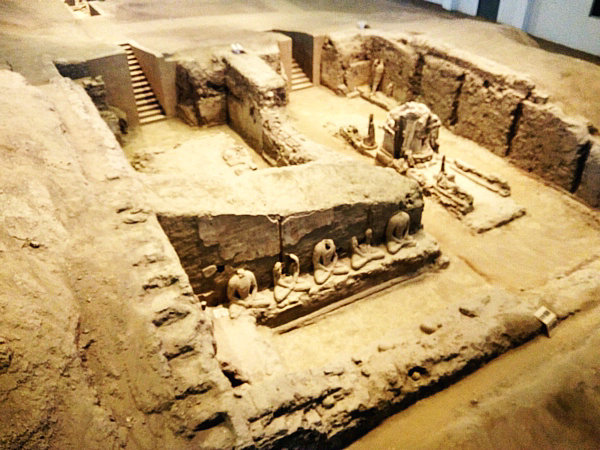Silk Road outpost awaits benefits of modern-day tourism
 |
|
Earthen walls and temple ruins of the ancient Bashbaliq City in the Xinjiang Uygur autonomous region. [Photo by Wang Kaihao/China Daily] |
In an area in the far northwest of China are earthen walls and temple ruins spread over an area of about 1.45 square kilometers. Locals call this site situated in a desert "the broken city".
Xin Junfeng, 32, grew up near this site in Jimsar county, in the Xinjiang Uygur autonomous region.
"Many years ago, people of my father's generation often found jade bracelets there," he says.
"And, in my childhood, the walls were bigger and more complete. I saw many colorful murals there."
But wind and rainfall have eroded the site. Now, only a small portion of the murals is visible, but what exists is still exquisite enough to enthrall.
The area referred to is Bashbaliq City, commonly known in China as Beiting, a stronghold on the legendary ancient Eurasian trade route, the Silk Road.
The city was established in the second century BC when Zhang Qian built up political connections between the Middle Kingdom and Central Asia.
It was ruled by several nomadic ethnic groups until AD 640, when the Tang Dynasty (AD 618-907) defeated the Gaochang regime and established a county-level administrative region there.
In 702, the Protectorate General for Pacifying Beiting was founded and became a political, cultural, and military center north of the Tianshan Mountains.
The city is believed to have been abandoned in the late 14th century after the Mongols fell.
The city was called Bashbaliq by the Mongols.














